26 letters and a few more pictures but 26 simple “must know” to learn the Vincent history. It cannot tell everything but you will get the essential.
Philippe Guyony © 2013
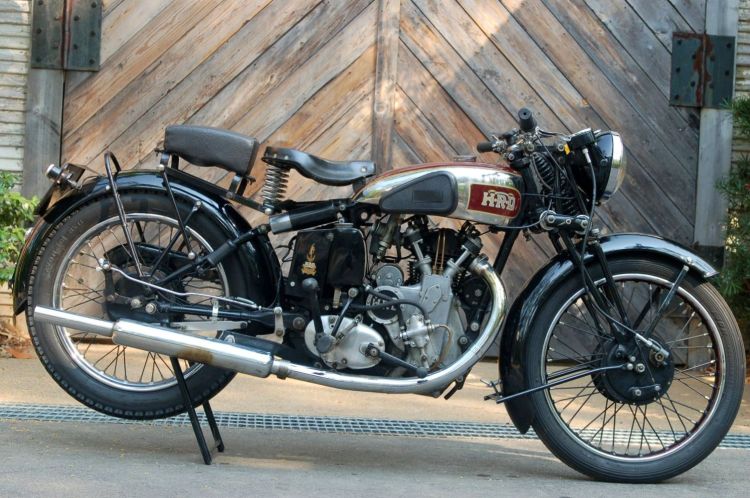
The Series A is extremely rare because it was manufactured only five years before WWII broke out, and secondly, it is one of a kind; unlike the B, C and D, which share a similar engine architecture, the “A” is completely different. In the real life, you don’t meet an “A” that often! The 500 Comet and its slightly detuned version, the 500 Meteor were introduced in 1934, while the famous 1000 Rapide joined the family in 1936. Only 78 Rapide were produced and 63 are known to remain. The legend says that Phil Irving explained his vision of the V-Twin by overlaying two blue prints of the Comet engine on the drawing board | Here is a 1937 Vincent 500 Comet.

As a 1000 Rapide Series A. Probably the most desirable model beside the Black Lightning; built at 78 units between Jan 1937 and July 1939.

The Series B was presented in 1946. Its development started backstage during the wartime in order to resume regular production once the war ended. Three models were introduced, the 1000 Rapide in 1946 then the 500 Meteor along with the Black Shadow in 1948. Only 128 Meteor, 1,852 Rapide and 77 Black Shadow were produced before the “C” arrived. | This is late Series B 1000 Rapide; the early one have a “ribbed” timing cover.
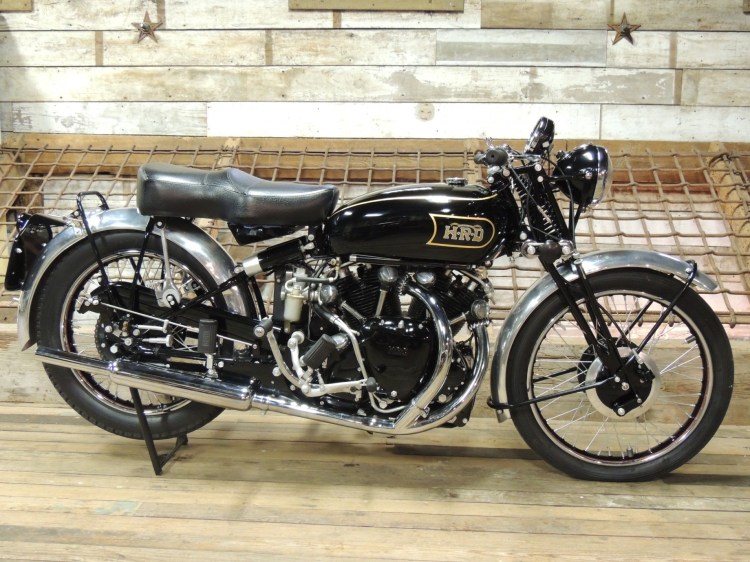
As a 1000 Black Shadow Series B; if you like the Series B with its Brampton fork, this is the one to get. Beside the black painted engine, the specification includes, larger carburetor (1in 1/8 instead of 1in 1/16 with a brass front unit), polished con-rods, valve rockers, combustion chambers and ports, not to mention the famous 5in Shadow clock and finned drum brakes.
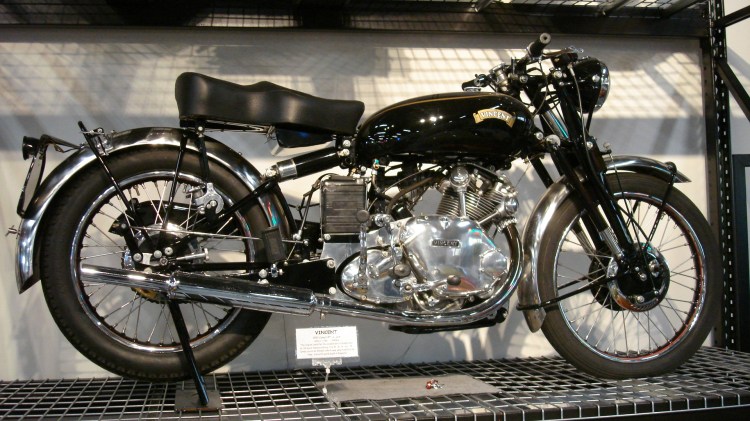
The Series C introduced in 1948 with some major suspensions upgrades: the Girdraulic front fork and a hydraulic damper for the rear cantilever. The rear frame (RFM) is easily recognizable because the seat dampers brackets have a bean shape. This is also when the brand switch between “HRD” and “The Vincent”, on the tank, crankcases, timing cover and service caps. Production includes 3,966 Comet, 2,752 Rapide, 1,552 Black Shadow, 15 White Shadow, 32 Black Lightning, 1 White Lightning and 31 Grey Flash. | This is the 500 Comet Series C.

As a 1000 Rapide Series C. (Photo (c) Vincent Michel)

As the 1000 Rapide Touring; it has 19/18in combo wheels, larger metallic fenders and raised handlebar for Side-Car applications. Colors were the Classic Black and the Blue or China Red. This latest choice was made by only 106 customers.

As the 1000 Black Shadow Series C; certainly the most popular model, as it is the archetype of the Vincent: Shadow spec, Girdraulic fork and “The Vincent” logo. 1,552 Black Shadow were built.
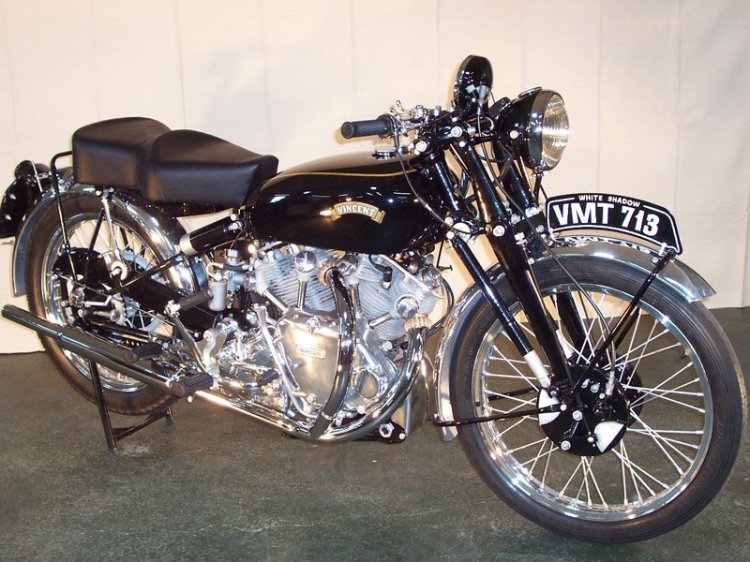
As White Shadow. Only 15 were ever made; the specification was a Black Shadow with un-enamel engine. This model is not stock because of the aluminum rims and the lightning front brakes.
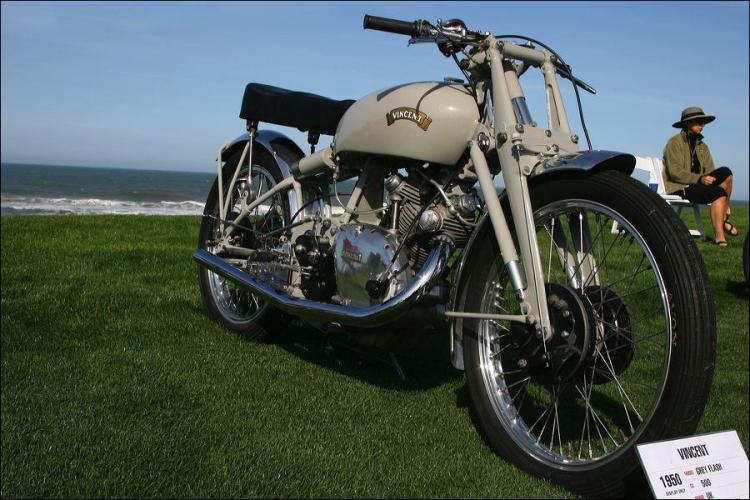
As the 31 Grey Flash (Series C). A 500cc racer dressed in grey; a unique feature is its Albion gearbox opposed to the standard Burman. Today, many Comet have been converted to Grey Flash spec for racing. (Photo © Corey Levenson)
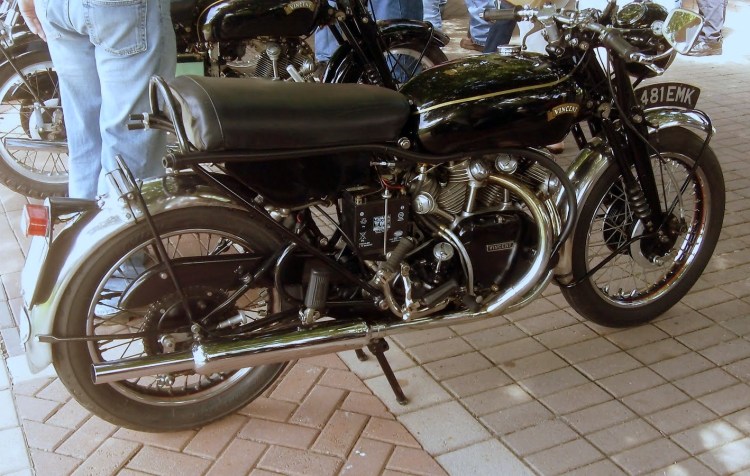
The Series D moved further Vincent’s vision of the Grand Tourism motorcycles. The frame was completely redesigned due to the addition of the fiberglass body panels and the seat became suspended. A central stand maneuverable by hand is added and a battery-coils ignition combo replaced the magneto. Note the open models (Rapide and Black Shadow) were introduced after the Black Knight and Black Prince as a fix to the stop shipment that occurred because of the poor quality of the very first fiberglass panels. The production includes 147 Rapide, 145 Black Shadow, 93 Black Knight, 115 Black Prince, 2 Black Lightning, 1 Comet and 1 Victor. | Above is a 1000 Rapide Series D

The Black Shadow Series D is very closed aesthetically to the Rapide; a “Black Shadow” replaces the “Mercury Crest” on the top of the tank. Although the desirability is very high among Vincent owners, many prefer the Series C as more emblematic of the Vincent myth.

As the Black Knight, the enclosed version of the Rapide. The fiberglass fairing is really clever and conveys the original Vincent concept to enable an easy maintenance.

As the Black Prince, the enclosed version of the Black Shadow.
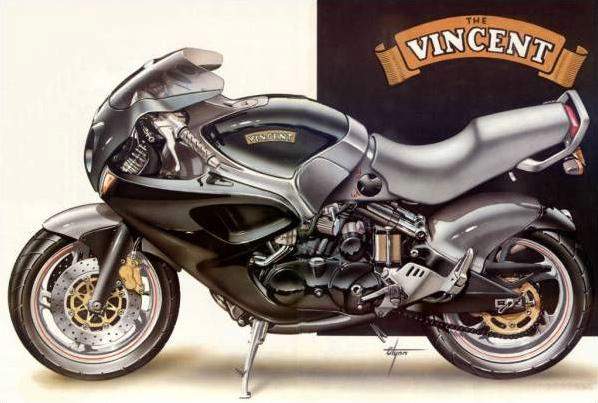
The Series E never hit the road but in the mind of enthusiasts. As Philip Vincent lived until 1979, you can imagine how many annual dinners inevitably ended up with the recurrent question to him: “What would have been the Series E if only…?”. This will remains an enigma forever.

Feridax was the supplier of the famous “double” solo-seat exclusive to the post war Vincent, across the Series B and C.

As Gunga Din, the works mule. It was the development bike for the Black Lightning and the Black Shadow and was raced by George Brown. From left to right, Philip Vincent, his wife Elfrida, reserve pilot Dennis O’Neill and Harry Lindsay in May 1953, at Carrigrohane, Ireland. Harry Lindsay set a new Irish speed record of 143mph.

As H.R.D. and Howard Raymond Davies (1895-1973). Davies was a former pilot, who incorporated in 1924 his own company with the following credo: “Built by a Rider”. As the motorcycle industry was depressed in the late 1920s, H.R.D. went voluntarily into liquidation and assets were sold to Ernie Humphries. As Phil Vincent was willing to create his own Motorcycle Business, he was later advised to buy these assets, which he did in 1928. This picture shows PCV (left) with HRD at the annual meeting in 1969 where they met for the first time as Philip Vincent was then the President of the V.O.C.

Phil Edward Irving (1903-1992) was Vincent’s Chief Engineer between 1931 and 1937. Irving designed the Series A before joining Velocette in 1937, but he came back to Vincent in 1943 and designed the Series B and C. Irving is seen as one of the most brilliant engineer of his generation; his life was devoted to his passion for Motorcycles and Motor Racing.
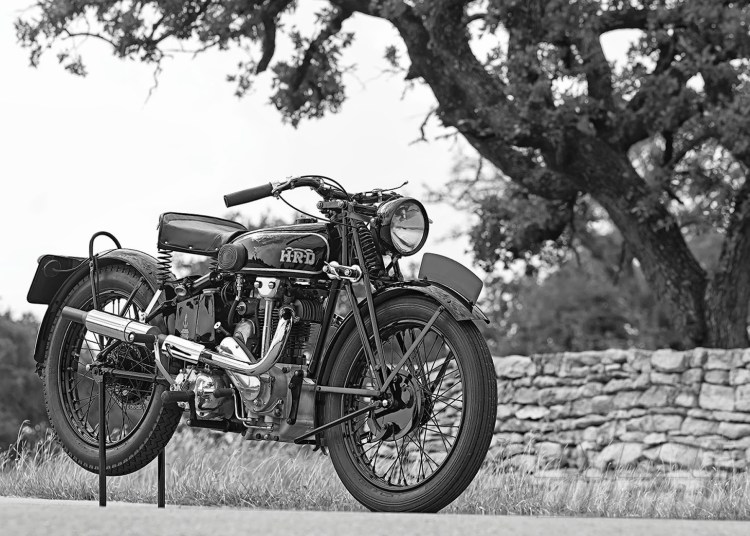
As J.A.P. which was with Rudge, one of the proprietary engine brand used on the very early Vincent manufactured from 1928 to 1934 and were superceded by the 500 Comet and Meteor designed by Phil Irving. This particularly bike is a 1932 Vincent-HRD Python featuring a 500cc 4-Valve Rudge single.
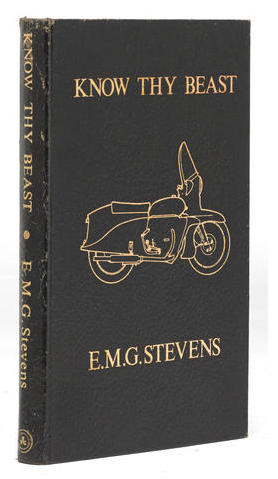
As “Know thy Beast”, from E.M.G. Stevens: a complete and detailed information on the restoration and maintenance of postwar Vincent motorcycles. This original edition was sold $350 at Bonhams, but you can find later versions for a more reasonable price.
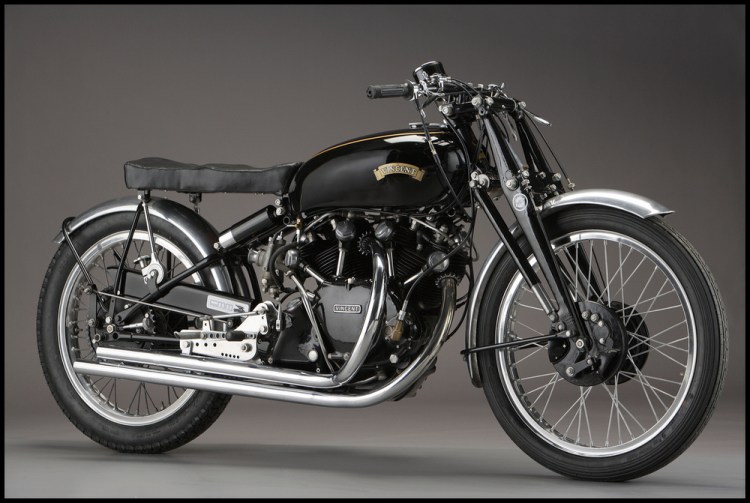
As this 1952 Black Lighting. The one that Richard Thompson put in lyrics. Only 33 Black Lightning were made, including 1 White Lightning.

As Montlhery, place of the 1952 records for Vincent. During this famous event, the Vincent team racked up 8 new world regularity records, including the 6 hours at 100.6mph record.

As the Plumber’s Nightmare. This reputation sticks to the 1000 Vincent particularly among those who don’t know anything about it. It comes from the Series A that have external lubrication conduits easy to identify on this picture and a challenge to get them perfectly sealed. The later engines (B, C and D) have internal lubrication conduits.
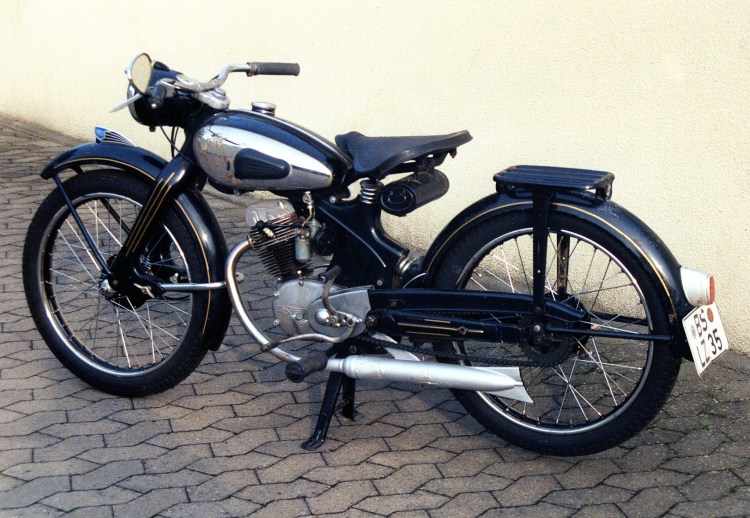
As Other Vincent models. The factory attempted several diversifications such a drone engine “Picador”, Lifeboat engines, 2-Stroke Industrial engines but the one which fits the best Vincent core business was this smaller machines licensed by NSU. Here its the Fox 125cc.
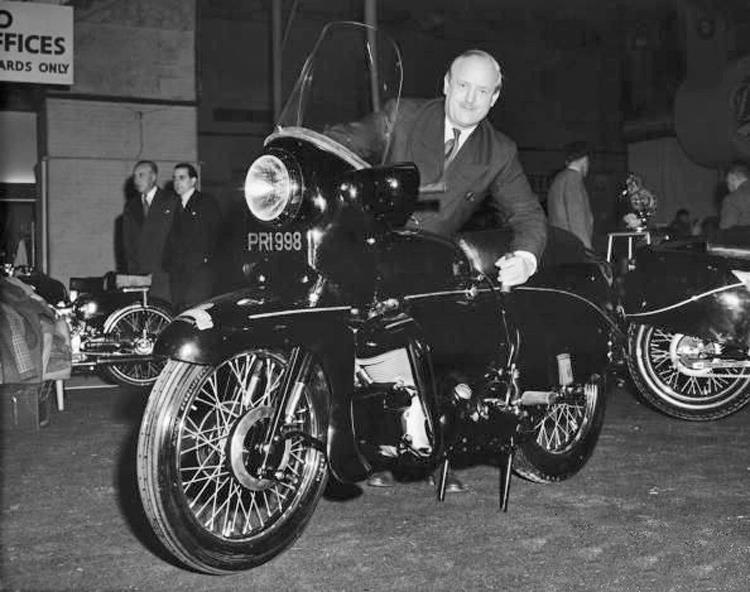
As Philip Conrad Vincent (1908-1979), known by enthusiasts as PCV. He bought H.R.D. from Howard R. Davies in 1928 for £450 and established the Vincent HRD Co., Ltd. PCV is here with PRI 998, the road test Black Prince.
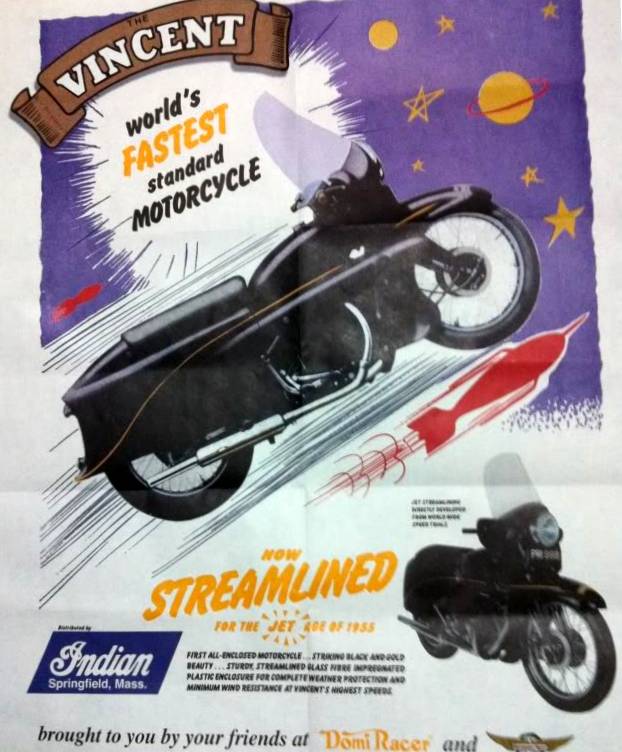
As the Quest for the “The world Fastest Standard Motorcycle”. Rollie Free, Marty Dickerson, George Brown and Russel Wright were among the most famous contemporary Vincent riders who were chasing the last mph to ensure this bolt statement remained a fact, not a slogan.

As the Vincent Rear suspension known as Cantilever; It was one of the numerous Vincent design signature and a genuine innovation as soon as 1928, on every mode.

As Specials; there are numerous stories over these last 60 years about the Specials Vincent: NorVin, Viscount, Vinton, ComDom, Egli-Vincent, RTV, Irving-Vincent, Capon-Vincent, Curtis-Vincent, Seeley, Rickman Metisse, Parkin-Vincent, Cees-Fick, Vincati…. You can refer to the related folders to know more about these. (© David McCairley Photography)
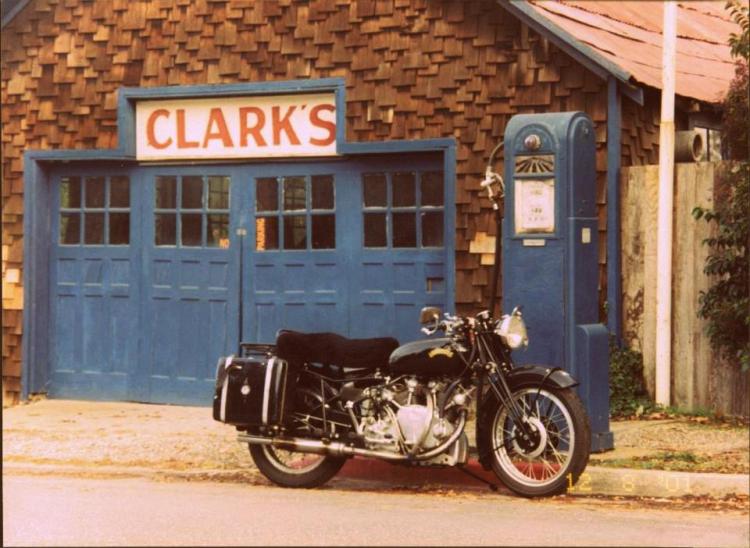
As Timeless experience. Riding a Vincent in 2013 is “something”, but thinking of what it was in 1946 compared to the rest of the motorcycle production is even Greater!
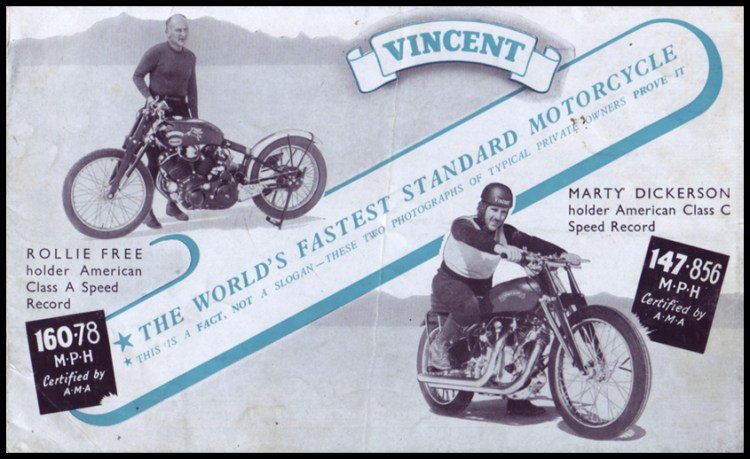
As Utah and the Bonneville Salt Flats. Rollie Free was the first one to break the barrier of 150 mph on his HRD Black Shadow crushing Joe Petrali’s 11 years old record (136.183 mph) with 150.313 mph. This was sufficient to make him a hero, but the fact that he stripped down to tight-fitting swimming shorts and laid flat on the Vincent wide open, made him a legend.

As V.O.C, the Vincent H.R.D. Owners Club. The club, presided by Bryan Phillips, is a genuine institution. Created to bond the community that was and still is broadly international, the club played a key role in maintaining the availability of parts subsequently to the transmission of the Vincent assets to Harper in 1959. Most of the countries, states and even counties in the UK have a specific sections and events; this is the place to start to meet Vincent enthusiasts. http://www.facebook.com/groups/35916442687/ (Photo © The Mighty Motor)
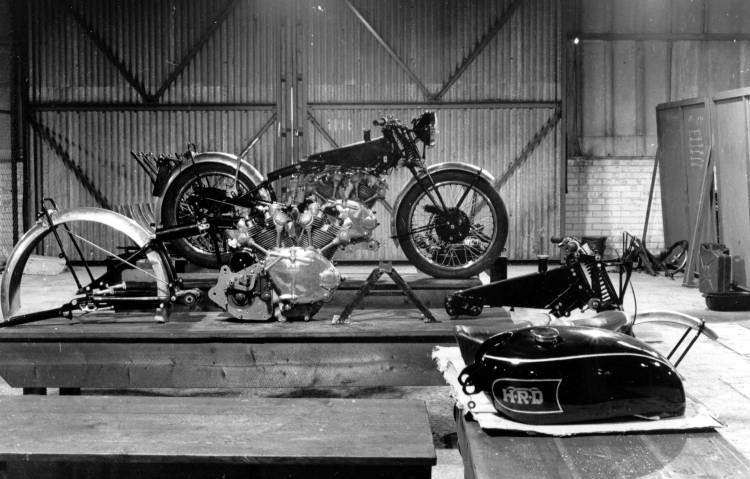
As Wolverhampton, the home of H.R.D. while Stevenage was yet to become the home of Vincent H.R.D. Wolverhampton is in Staffordshire close to Birmingham and Stevenage in Hertfordshire, in the north suburbs of London. Both in the UK of course.
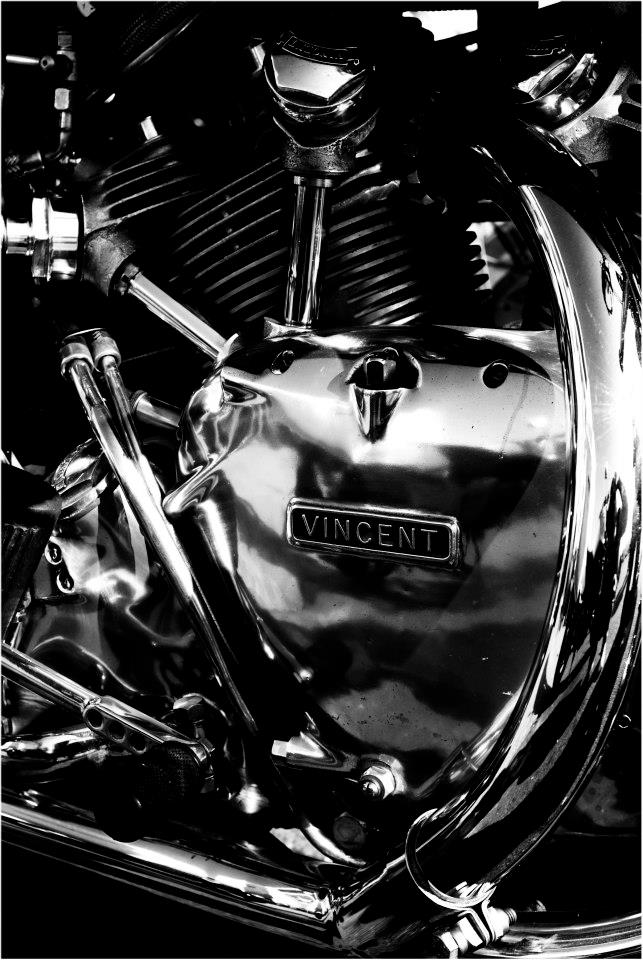
As the X-Factor that you feel when you are riding a Vincent, particularly a the twin. This engine is a masterpiece and is completely effortless at any speed. In a modern rolling frame like Egli, it becomes nimble and incredibly agile on small road.

As Why did Vincent stopped their production? The Vincent story is a great Engineer’s story and like many of that kind, trade-offs are not made where they should be. A Vincent was expensive to make, to buy and to maintain compare to other bikes; a marketing approach would have made different trade-offs. Vincent also missed large export market unlike Norton, Triumph and other BSA, which were flooding North America and Europe; only 30% of the Vincent were exported. I also personally think that the factory has lost too much energy and capital in diversification efforts rather than focusing on its core business.
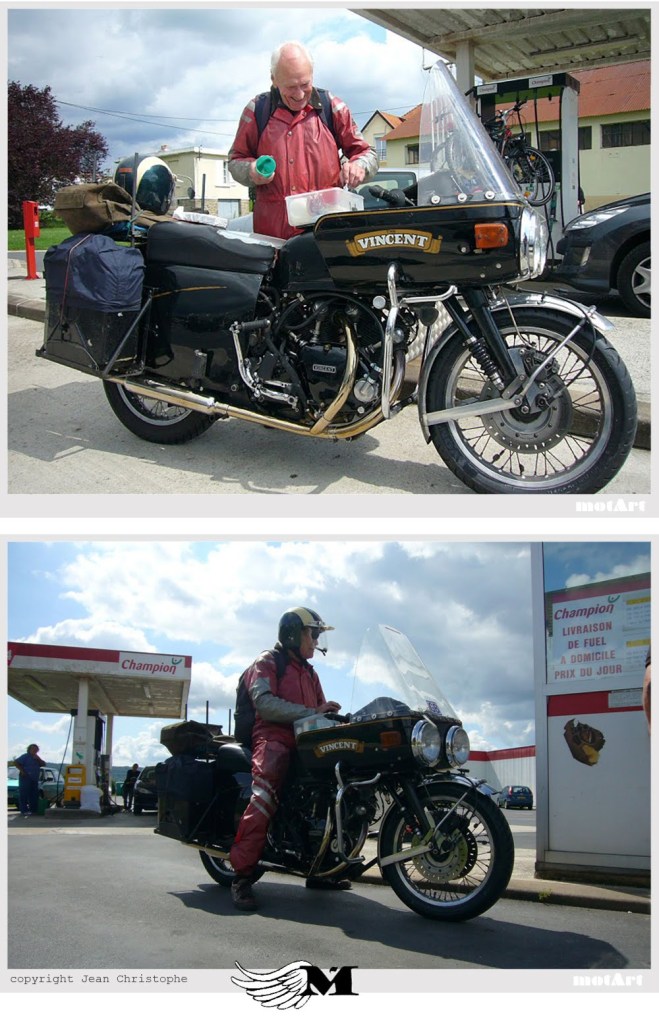
As “Z” End of the story? Certainly not; years after years, a dominant core of long time Vincent owners meet, ride, race, cheer and love their bikes, and this never ended. Stuart Jenkinson, which put 721,703 miles during 56 years on his 1955 Black Prince ownership became one of the most emblematic, but there are many more around the world. (Photo © Jean Christophe)
Recommended bibliography
VINCENT Motorcycle Buyer’s Guide by Zachary Miller | Motorbook International
Vincent Motorcycles since 1955, by David Wright | V.O.C. Editions
VINCENT by Duncan Wherrett | Osprey Classic Motorcycles
VINCENT V-Twins by Roy Harper | Osprey Classic Motorcycles
A Photographic Miscellany by Geoff Preece | V.O.C. Editions
Tuning for Speed by Phil Irving
Additional advanced bibliography
VINCENT Motorcycles by Paul Richardson | V.O.C. Editions
VINCENT H.R.D. Story by Roy Harper | Vincent Publishing Company
VINCENT H.R.D. by Peter Carrick | World Motor Cycles
LA 1000 VINCENT by Antoine Guirao (French)
KNOW THY BEAST by E.M.G Stevens

Can I add a picture of my much modified Knight that was well known throughout the VOC 70/80’s please?
Sure, you can send me any document at 998lightning@gmail.com Philippe
Just a minor point of clarification as it involves my hero – Howard Raymond Davies? PCV bought the remains of the HRD business, including the name, from Ernie Humphries (of OK supreme fame) he didn’t buy it direct from Howard Davies as stated. PCV and HRD met for the first time at the 1969 VOC Annual Dinner and photo H is the much used picture showing them together for the first time.
This is correct, I learnt that since the page was created. Thank you for the catch I will edit. Philippe
Spot on with your comments.
Hi, i like to add three more books that i have on the Vincent:
1. Vincent H.R.D. gallery by Roy Harper(publ.by the Vincent publishing company)
this has all the H.R.D. and Vincent models in photographs in it
2.The Vincent H.R.D. story also by Roy Harper (also by the Vincent publishing company)
to me this is by far the best book on the Vincent H.R.D. historie
3.George Brown: Sprint Superstar by Cliff Brown (Haynes publishing 1981)
Great book on the Vincent sprintmaster!!